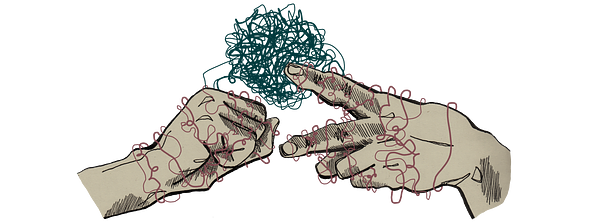Professionals and Practitioners
This digital resource tells the story of how our brains interpret the world around us and how this translates in our bodies, emotions and behaviours. It has been designed to be used by professionals working with young people interested in learning more about the science of conflict and boosting their wellbeing.

What is Conflict?
Summary
- Conflict is part of being human and almost unavoidable. Throughout human history, it has played a role in forming everything from families to societies.
- Within families, conflict can arise from a myriad of sources, often stemming from differences in values, perspectives, and needs. However, amidst the tension and discord, lies an opportunity for growth, understanding, and resilience.
- Conflict has differing definitions, but generally we can say conflict can be defined as a clash or disagreement between individuals or groups, characterized by opposing interests, goals, or viewpoints.
- While conflict within families may be inevitable, it does not have to be destructive. Conflict can even in some circumstances serve as a catalyst for growth, understanding, and strengthened relationships.
Conflict is an inherent part of the human experience, a dynamic force that shapes our interactions, relationships, and societies. It is an ever-present aspect of our lives, manifesting in various forms and contexts.
Within families, conflict can arise from a myriad of sources, often stemming from differences in values, perspectives, and needs. However, amidst the tension and discord, lies an opportunity for growth, understanding, and resilience. In this exploration, we delve into the essence of conflict, dissect common causes within familial settings, and ultimately explore strategies to reframe conflict in a positive light.
Conflict has differing definitions, but generally we can say conflict can be defined as a clash or disagreement between individuals or groups, characterized by opposing interests, goals, or viewpoints.
What is Conflict?
At its core, conflict can be defined as a clash or disagreement between individuals or groups, characterized by opposing interests, goals, or viewpoints.
It can manifest in overt expressions such as arguments or physical altercations, as well as in subtler forms like passive-aggressive behaviour or emotional withdrawal.
Conflict arises from the complex interplay of factors including differing perspectives, unmet needs, communication breakdowns, and power imbalances.
In the context of families, conflict takes on a particularly poignant significance. Family units are bound by blood, emotion, and history, creating a unique dynamic where conflicts often carry deeper emotional weight. Whether it’s a disagreement between siblings, tensions between parents and children, or conflicts between extended family members, the familial bond both intensifies and complicates the resolution process.
Elements of Conflict
There are six elements to a conflict described by S. Rice in their article ‘Non-violent conflict management: Conflict resolution, dealing with anger, and negotiation and mediation’ (2000):
1. Conflict is inevitable. Nobody agrees with everybody else all the time, so conflict will, from time to time, happen.
2. Conflict by itself is neither good nor bad. While leaving conflict unresolved can result in negative outcomes, conflict itself is neither good nor bad. Sometimes good things can come out of conflict.
3. Conflict is a process. We choose how to respond to others and can escalate or deescalate a conflict.
4. Conflict and avoiding conflict both consume energy. Avoiding having a conflict and avoiding resolving a conflict both consume energy which we could use elsewhere.
5. Conflict has elements of both content and feeling. While conflict often arises from a specific behaviour or action, it often involves underlying emotions. That’s why arguments that appear to have trivial origins can point to larger issues. If a parent and his or her young people are arguing over cleaning a bedroom, it might seem trivial in itself but in fact it is wired into larger issues, such as the parent feeling like their child doesn’t respect him or her.
6. We can choose to be proactive or reactive in a conflict. Being proactive during conflict resolution can lead to happier results for families.
Common Causes of Conflict within Families
1. Communication Breakdown: Ineffective communication lies at the heart of many family conflicts. Misunderstandings, misinterpretations, and unexpressed feelings can create a breeding ground for resentment and frustration. When communication channels break down, individuals may resort to passive-aggressive behaviour or emotional distancing, further exacerbating the conflict.
2. Divergent Values and Expectations: Each family member brings their own set of values, beliefs, and expectations into the fold. These differences, while natural, can lead to clashes when they are not acknowledged or respected. Conflicts may arise over matters such as religion, lifestyle choices, career paths, or parenting styles, as individuals grapple with reconciling their own values with those of their family members.
3. Unresolved Past Traumas: Familial conflicts are often fuelled by unresolved past traumas or resentments. Lingering grievances, old wounds, or patterns of dysfunction can resurface. Without addressing these underlying issues, conflicts may persist and intensify over time.
4. Role Ambiguity and Power Struggles: Within families, there can be ambiguity surrounding roles, responsibilities, and power dynamics. Conflicts may arise when individuals feel their contributions are undervalued, or when there is a perceived imbalance of power. Struggles for control between parents and children can become unresolved power struggles that sow seeds of discord within the family unit.
5. External Stressors: External stressors such as financial difficulties, health problems, or external influences from extended family or social networks can also contribute to family conflicts. These stressors can strain relationships, heighten emotions, and diminish individuals’ capacity to effectively navigate conflicts.
Framing Conflict in a Positive Light
While conflict within families may be inevitable, it does not have to be destructive. In fact, when approached with intentionality and openness, conflict can serve as a catalyst for growth, understanding, and strengthened relationships. Here are some strategies for reframing conflict in a positive light:
1. Foster Open and Honest Communication: Encourage family members to express their thoughts, feelings, and needs openly and honestly. Create a safe space where individuals feel heard and valued, without fear of judgment or reprisal. Effective communication lays the groundwork for resolving conflicts and building mutual understanding.
2. Practice Empathy and Perspective-Taking: Encourage family members to empathize with one another’s perspectives and experiences. Foster a mindset of curiosity and openness, seeking to understand the underlying motivations and emotions driving each person’s behaviour. By stepping into each other’s shoes, individuals can cultivate compassion and forge deeper connections.
3. Seek Common Ground and Compromise: In the midst of conflict, strive to identify areas of common ground and shared interests. Look for creative solutions that honour the needs and concerns of all parties involved. Emphasize the importance of compromise and collaboration, rather than viewing conflict as a zero-sum game.
4. Learn from Conflict: View conflict as an opportunity for learning and growth, both individually and as a family unit. Reflect on the underlying dynamics and patterns at play, identifying areas for personal and relational development. Embrace conflict as a catalyst for positive change, fostering resilience, adaptability, and strengthened bonds.
5. Seek Professional Support When Needed: Recognize when conflicts escalate beyond the family’s capacity to resolve them internally. There is no shame in seeking outside support from therapists, mediators, or family counsellors. These professionals can provide guidance, facilitate constructive dialogue, and offer tools for navigating conflicts in healthy and productive ways.
In conclusion, conflict between parents and carers and young people is a complex and multifaceted phenomenon, shaped by a myriad of factors including communication breakdowns, divergent values, unresolved past traumas, power struggles, and external stressors.
However, conflict also presents an opportunity for growth, understanding, and connection when approached with intentionality and positivity. By fostering open communication, practicing empathy, seeking common ground, and embracing conflict as a catalyst for learning, families can navigate turbulent waters with grace and resilience, emerging stronger and more united in the process.
References and Further Reading
- The Sociobiology of Conflict by JMG van der Dennen. University of Groningen, 1990.
- Understanding Conflict by Dr Aslam Khan. Mahatma Ghandhi Central University, 2023.
- What is Conflict: Common Causes of Conflict; Frame Conflict in a Positive Way by Stevy Scarbrough. Open Oregon Educational Resources, 2023.
- What is Conflict? University of Southampton, 2023.





